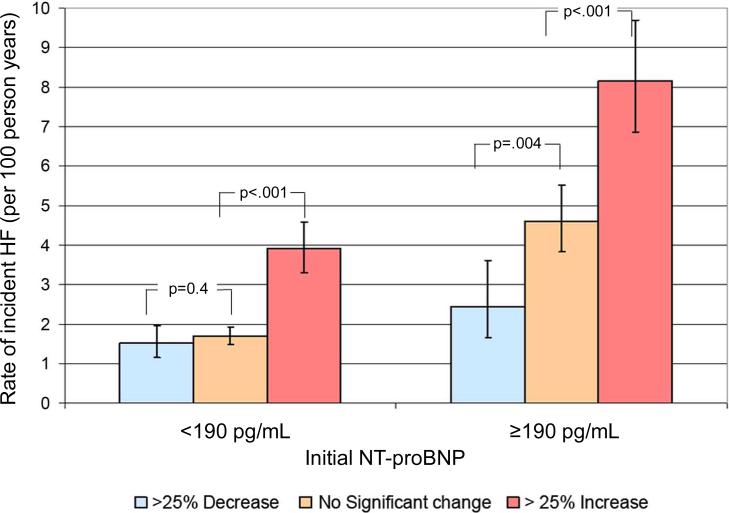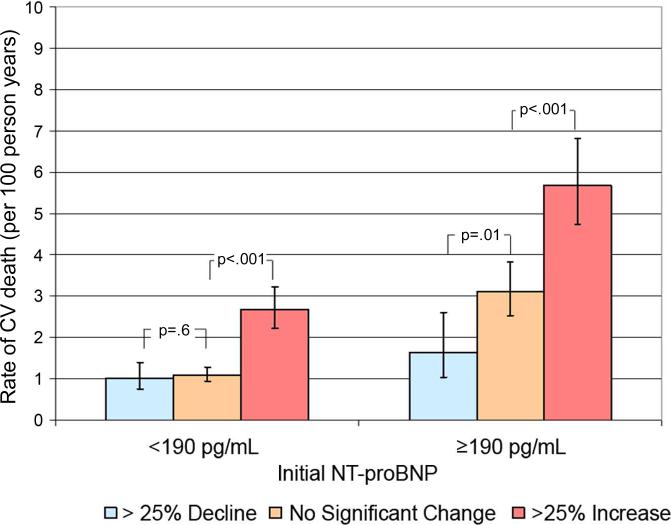Figure 4. Incident rates for cardiovascular outcomes based on change of NT-proBNP level.
Incident rates for (A) new onset heart failure (HF) and (B) cardiovascular (CV) death based on change or absence of change between baseline and follow-up amino terminal pro-B-type natriuretic peptide (NT-proBNP) levels. Change in NT-proBNP level is defined among those with a baseline NT-proBNP <190 pg/mL as either a decrease in NT-proBNP of at least 25% or an increase of at least 25% to a level ≥ 190 pg/mL. Change in NT-proBNP level is defined among those with a baseline NT-proBNP ≥190 pg/mL as either a decline of at least 25% to a level <190 pg/mL or an increase of >25%.


